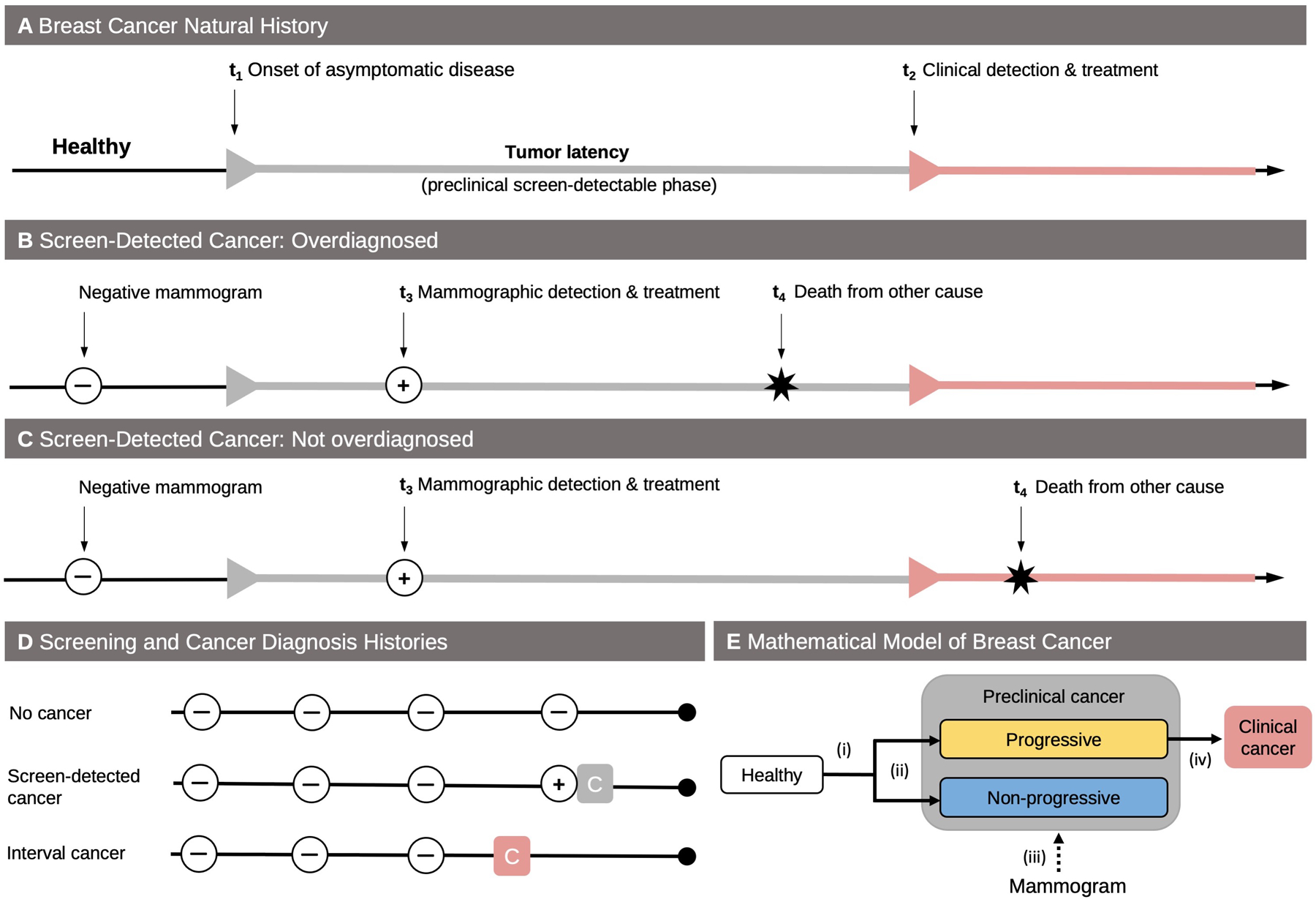Figure 1.

Overdiagnosis definition, data structure, and mathematical model. A. In the absence of screening, healthy women can develop preclinical cancer (t1). After a period of asymptomatic but screen-detectable tumor latency (sojourn time), women with preclinical cancer develop clinical cancer (t2). B. A screen-detected cancer at age t3 is overdiagnosed if, in the absence of screening, death from a breast cancer unrelated cause (age t4) would have occurred before onset with symptoms or signs (t4 < t3). C. On the other hand, the detected cancer is not overdiagnosed if the time of death would have occurred after onset with symptoms or signs (t4 > t3). D. The screening and cancer diagnosis histories of women in the Breast Cancer Surveillance Consortium cohort can be assigned to 1 of 3 groups: no cancer diagnosis, diagnosis with a screen-detected cancer (gray square), and diagnosis with an interval cancer (red square). E. The mathematical model used for natural history estimation and overdiagnosis prediction has several components: (i) age-dependent incidence of preclinical cancer, (ii) fraction of preclinical cancer that is nonprogressive, (iii) sensitivity of screening tests, and (iv) tumor latency among progressive cancer.
